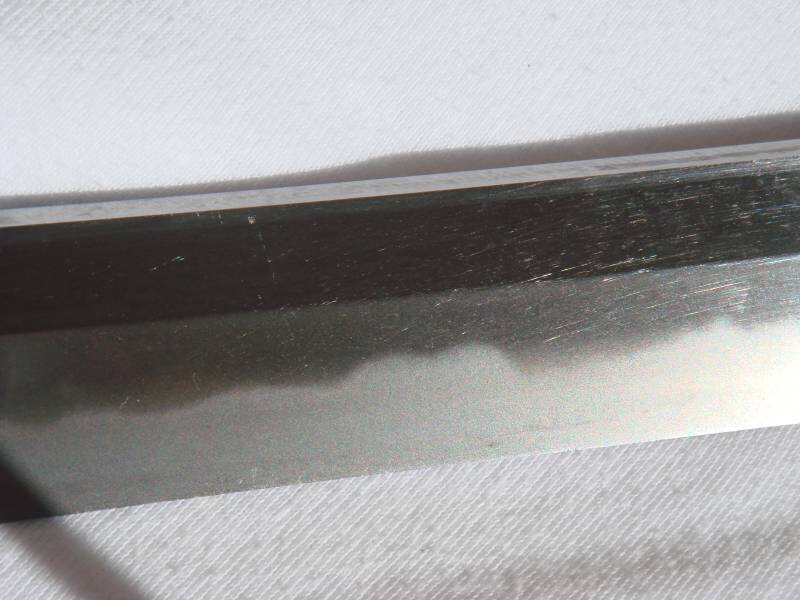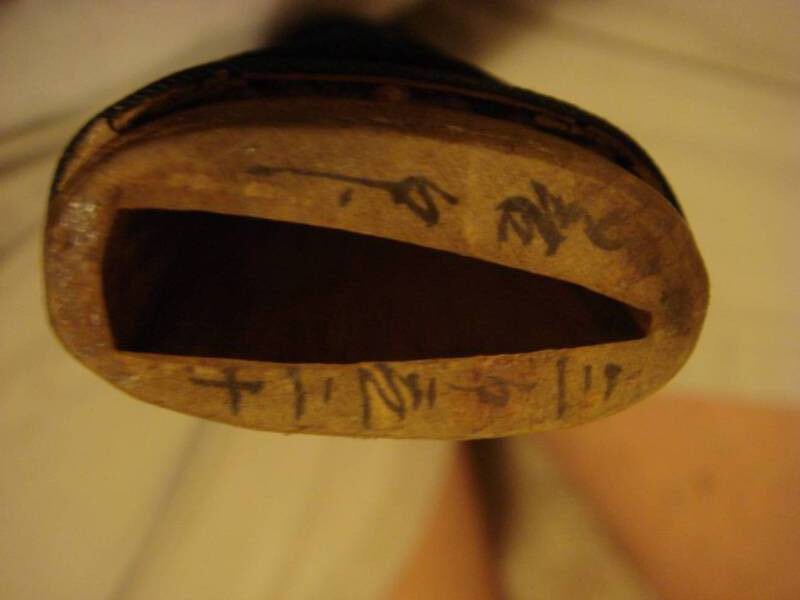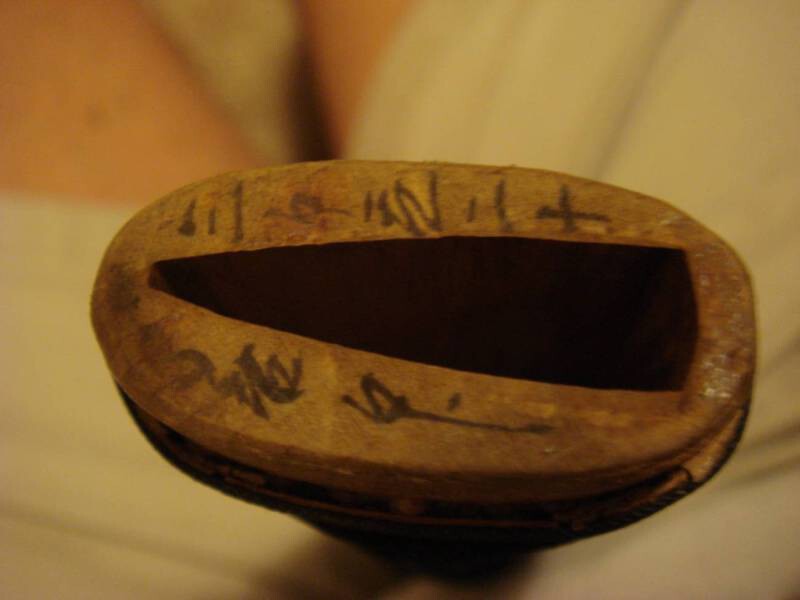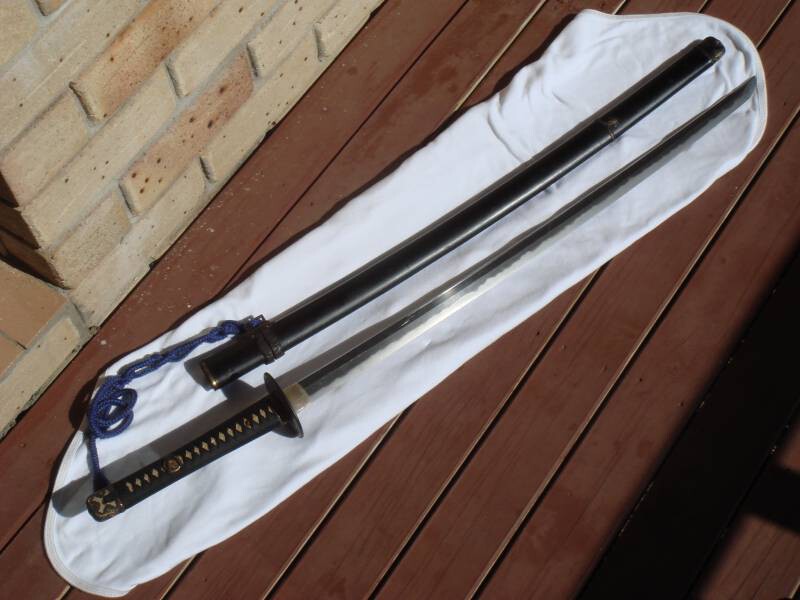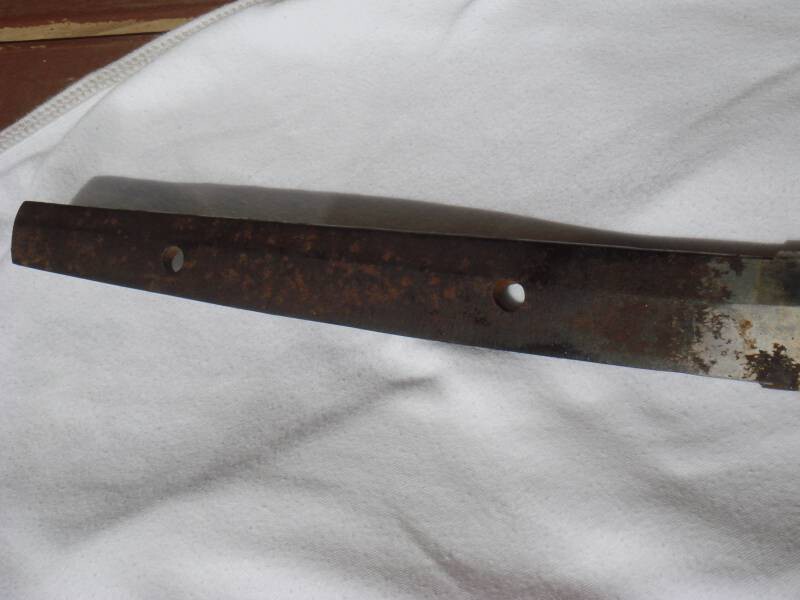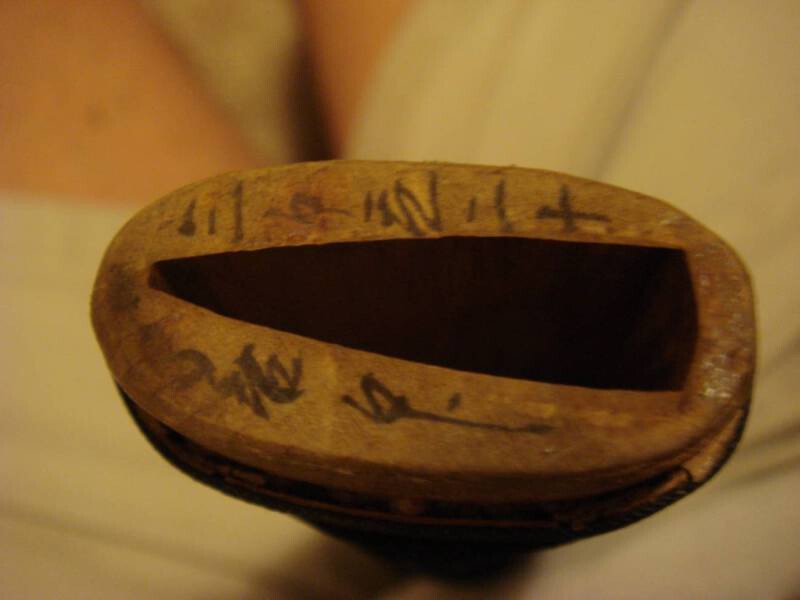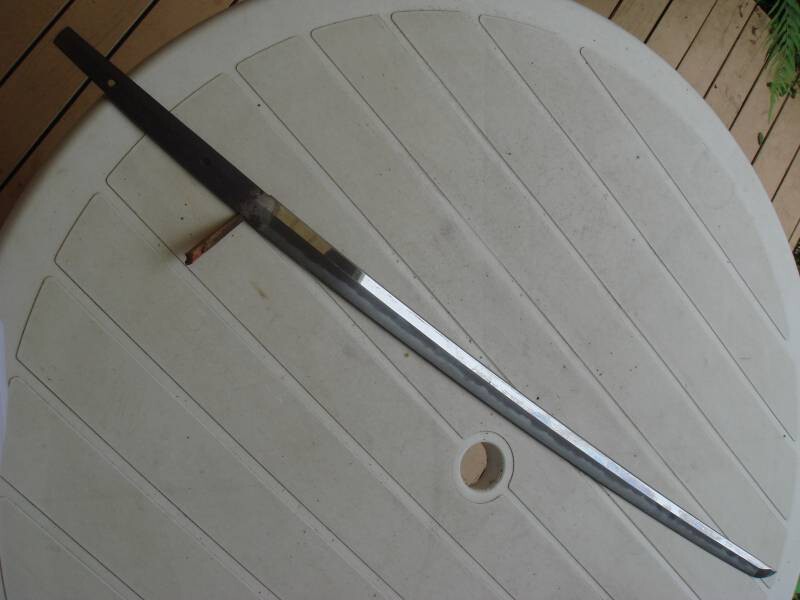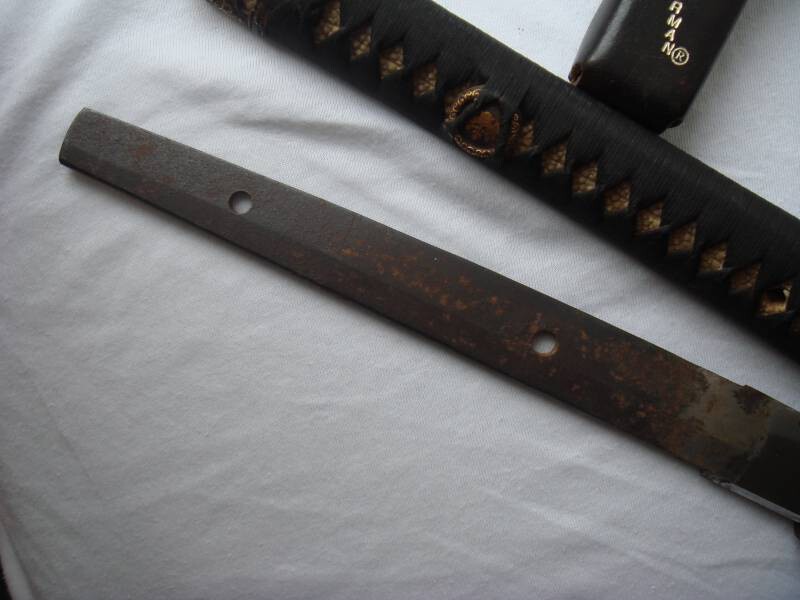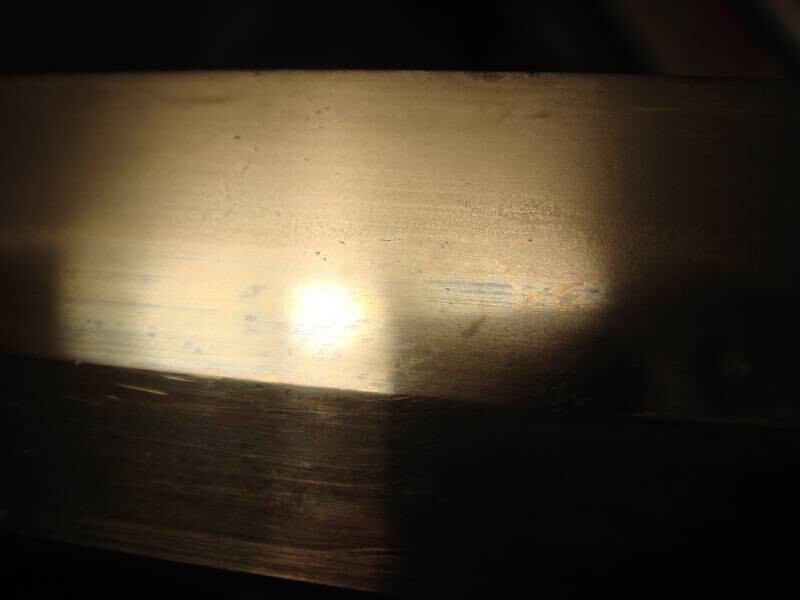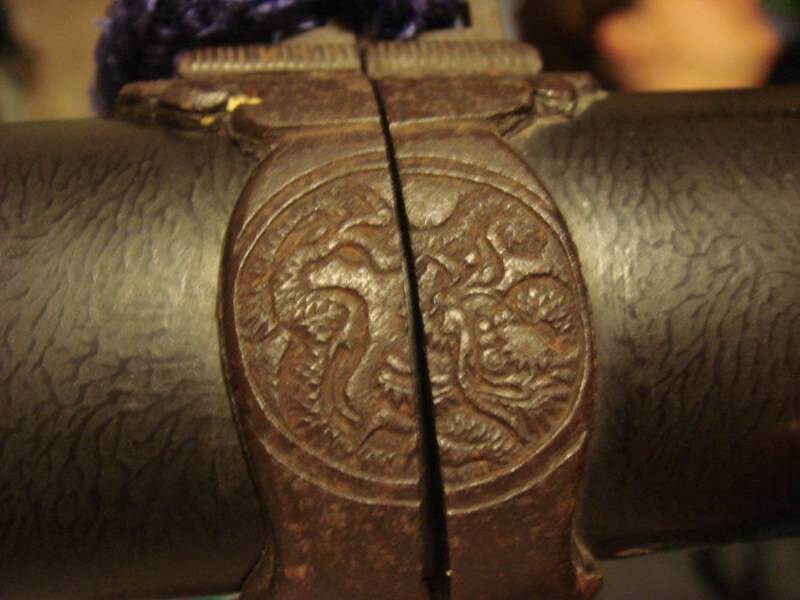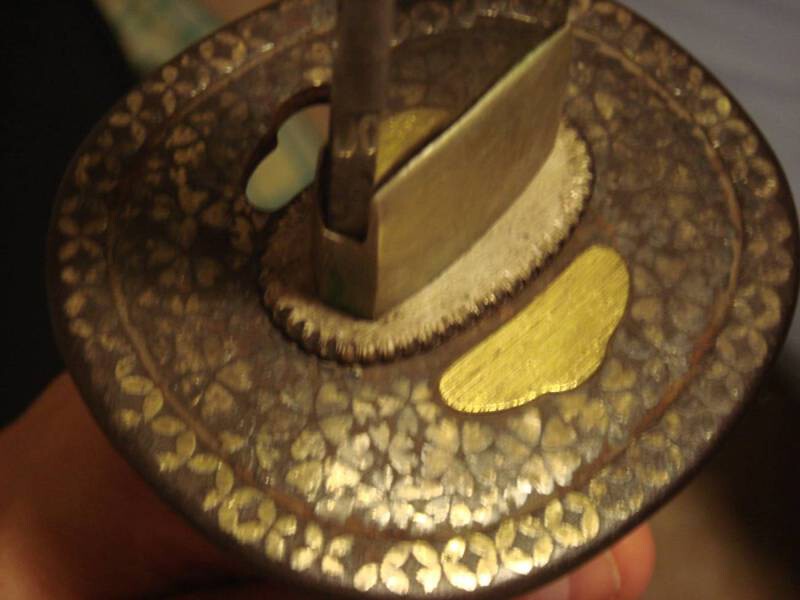-
Posts
164 -
Joined
-
Last visited
Content Type
Profiles
Forums
Events
Store
Downloads
Gallery
Everything posted by Jock
-
Hi Folks, thank you all for your thoughts and contributions - very much appreciated! Jock
-
Maybe I'm wrong - maybe you can't see it - I enlargened the pics a lot more than the 2 following ones - the whole blade looks like "normal" steel, but the enlarged hamon looks like a sheet of crystals in all kinds of colours.... is this normal?? Ask me and I can forward you detailed pics...3MB each.. Any thoughts on this one? Jock
-
Hi, I need some help here.....who can tell me what the writing means and any other information related to it - Thank you for your help! You can also e-mail me at : theroadbuilder@yahoo.co.uk Jock
-
-
Hi, I have received and compiled the following statements - please have a read and let me know what you think is correct and what is in-correct - thank you very much for your helpful advise! FITTINGS: The sword is a suriage Katana in Higo Handachi koshirae (Edo period), that means a cut down long sword in a style of fittings used in the Higo Province of Japan, and in a part 'ceremonial style' that is usually worn blade up through the sash at the waist, but still retaining the ceremonial tachi look' of a slung sword worn at court. Han-dachi Koshirae - The fittings are a style called Handachi (so-called "handachi" mountings; this is a half way between an katana (civilian mount) and tachi (worn with armor). and from what I can see are good quality valued from approx $1000-1500. All of the fittings including the guard (tsuba) are matching and en suite. HANDACHI - tachi mountings used on a katana "Endo Period" =1600-1876. The fittings are Higo styled. Higo is a province on the southern island of Kyushu where this style was popularized. The gold onlay work on top of the iron base metal is called "Higo Zogan" and is a style still practiced in that region to this day in the manufacture of various vases, desk top boxes, etc. The loops on the saya (scabbard) are of an uncommon design meant to have dual utility. In the postition they are in the picture (together at the central seam) the sword is meant to be worn edge up. If one is separated and slid down the saya slightly, then it provides the ability to wear the sword "slung" edge down in tachi fashion. It is speculated that this is a rare equipment provision for those occasionally riding horseback to accommodate continued wear of their sword without changing to an alternate style of mountings. The menuki mon (emblem on the stud in the middle of the handle) shows the acorn - which was the Tokugawa mon (crest). menuki is the mon of the Takatora family. The menuki is a kiri mon (a heraldic badge related to the imperial household dating back to the kamakura period but used throughout history.) (katana mounts that look like a tachi). The fittings are of some interest, and appear to be a matching set or at least a matching style, but they're certainly newer than the blade. The inscription on the tsuka or saya is a makers signature. The inscription is done in grass script, and this is very hard to read. Like messy handwriting. The left side I can't read, the right side has some numbers in it... 3 something, 2 something, 20. TANG: Two main possibilities. Most likely the lower one was the original hole before shortening. That would say that it was circa 31-32" originally (very long for a Kanbun Shinto Katana), or it was a secondary peg hole (mekugi-ana) for added strength when used for (test-)cutting. Given the length and that such long blades are unusual in Kanbun era, that's definitely a possibility. The end of the tang appears to have a slight curve to it, which might say it wasn't shortened, but was made that way. The tang suggest that the blade length was shortened from the original length. The slant file mark on the tang and the hole in the area is original. The right angle file mark and the hole in it is a newly shaped tang and new hole. And cut the end of the tang off. The work was done more than hundred years ago. Please study the hamon, is it running into the tang? If so, the blade must be shortened in the past. It would appear to be earlier than 1600. BLADE: I think it is a koto blade. "KOTO - Old Sword Period (prior to about 1596) That would say that it was circa 31-32" originally (very long for a Kanbun Shinto Katana), or it was a secondary peg hole (mekugi-ana) for added strength when used for (test-) cutting. Given the length and that such long blades are unusual in Kanbun era, that's definitely a possibility. The end of the tang appears to have a slight curve to it, which might say it wasn't shortened, but was made that way. The temper line "idari togari (irregular pointed). Polish is ok; I'd say in 80% polish from the photos (very minor tip chip, some minor scuffing and stains, etc). Low curvature. Especially with short point suggests Kanbun Shinto. My best guess (given lack of change of rust colour/patina on the tang where it was cut down) would be a long kanbun shinto (circa 1660) katana that was slightly shortened, or maybe an older tachi that was shortened a lot (by the distance between the two peg holes) in the 1600/1700's. The sword is a suriage Katana in Higo Handachi koshirae ...... that means a cut down long sword in a style of fittings used in the Higo Provence of Japan, and in a part 'ceremonial style' that is usually worn blade up through the sash at the waist, but still retaining the ceremonial tachi 'look' of a slung sword worn at court. The sword blade looks to me to be from the mid 16th century, specifically in a period called "kanbun" (about 1661), and has been shortened from the tang end approximately four to five inches. This is not altogether uncommon, and any signature it may have had was likely lost during that event. A cursory lob of my opinion is that it may be from the Echizen Yasutsugu school as it has some characteristics of this school. The whole-blade picture helps a lot. I'm now pretty certain of Kanbun Shinto (1660's or so). If you are interested in value I would estimate that your sword, assuming the mounts are in good condition is worth $6,000 to $10,000 in US dollars, maybe even more if the blade is really good, maybe less if it has problems
-
Hi, I live in Coffs Harbour - lovely Australia that is...... still looking for somebody in this part of the planet who would be able to meet up with me to give me his knowledgeable opinion.... Jock
-
-

Help Help - I found a nihonto / katana
Jock replied to Jock's topic in General Nihonto Related Discussion
couldn't attach the pics...hope it works this time....Jock -
Hi, I found this blade and would like to ask you for your professional advise. I don't know anything about it - I took the handle off and couldn't find a signature on the blade - only the inscription on the handle-wood (see pic) - Thank you for your time and help any information is appreciated - I kept them fairly big that you can see the details. Please let me know what you think about this sword and what kind of information you need for a proper analysis..Attached you will find some pics - e-mail me at theroadbuilder@yahoo.co.uk for any additional or more detailed pics.....Thank you very much for your help. - The measurement from tip to end of the cutting edge (the notch there). = 72.9 cm so just 1mm short of 73 cm - total length = 93.9 cm so just 1 mm short of 94 cm - point length = 3.1 cm so just 1 mm longer than 3 cm - tang length = 21 cm - curvature (overall including tang to the end) = 1,5 cm = 15 mm - curvature without tang (point to where the tang begins) = 0.8 cm = 8 mm - blade width just before the tang = 2.9 cm = 29 mm Please let me know if you need any additional details.... I really appreciate your help Regards, Jock PS: It took me 20 years to get it - so I have no intention to sell it - but I would appreciate if you could give me as much as possible on information and a realistic value for it - just for my own interest.
-
I live in Coffs Harbour and found a katana - I sent some pics to a knowledgable person who told me that the blade is from 1600 something - who can help me : a) I need contact e-mails of people of whom I could contact to find out more about age/value etc etc b) I need some contact around NSW to show the katana to a person who knows the ins and outs.....pic is only blade - but all the bits and pieces are there too..... e-mail it to theroadbuilder@yahoo.co.uk Thanks folks.........Regards, Jock


